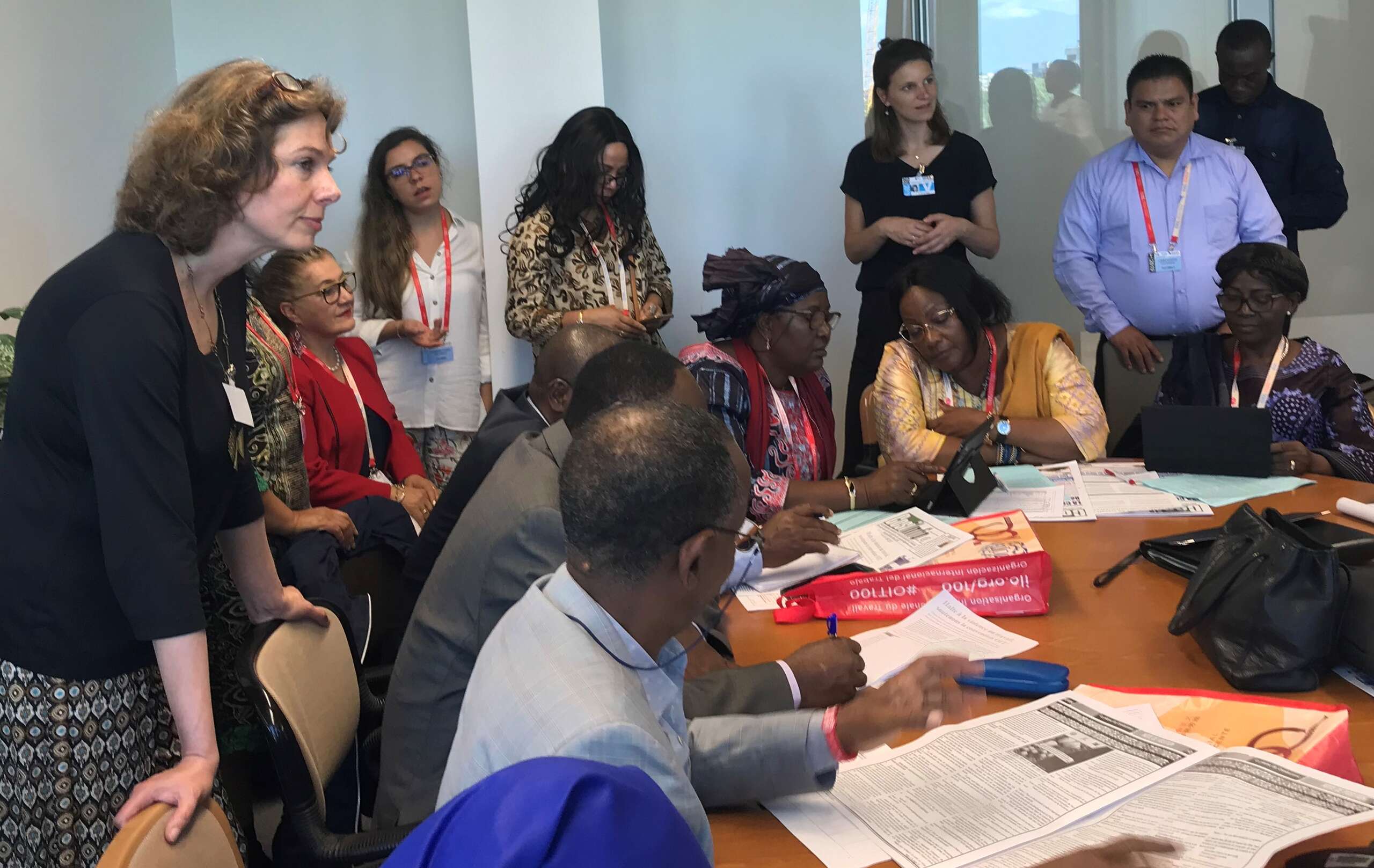Nicole Mathot is regional coordinator and gender expert at CNV Internationaal: "Workplace violence and harassment is a global problem and a major obstacle to gender equality. It harms not only employees, but also employers and society as a whole".
Your focus is on gender equality in the workplace, is that still necessary in 2021?
Unfortunately, it certainly is: over 60 per cent of workers experience gender-based discrimination or harassment and one in three women experience physical or sexual violence at work. In 2019, the groundbreaking Convention 190 against violence and harassment at work was adopted by the UN's International Labour Organization (ILO). For the first time, this convention includes a broad definition of violence and harassment. What is also special is that the convention covers all work situations in both the public and private sector (regardless of the form of the contract) and in the informal sector. This means that women who work as domestic workers or nannies in families, for example, are also protected. Until recently, there was no international legal framework that considered violence and harassment at work as possible violations of human rights.
COVID-19 has had a major impact worldwide, has it also affected the safety of women at work, do you think?
Corona has blurred the lines between work and home. We know that violence at home increases in times of crisis and this also has an impact on work. The convention rightly makes a link between work and domestic violence. Employers have a duty of care to help employees who are in such a situation. For example, by giving them time off from work so that they can take measures to protect themselves and ensure that they do not lose their jobs and economic security. Many women have also lost their social network with colleagues as a result of corona and risk becoming isolated.
Many trade unions with whom CNV International cooperates pay attention to safe work. Can you mention an example that inspires you?
Due to the restrictive Corona measures, many of our partner unions had to accelerate the digitalisation of their services. A trade union like COSI in Benin (Africa) has taken a very dynamic approach with a free telephone helpline for women who are confronted with sexual harassment and violence at work. Women can go there for psychosocial and legal help. If necessary, COSI refers the women for medical assistance. But COSI also works on prevention and awareness, for example by training journalists in the problems of gender-based violence and intimidation at work. COSI has also set up a Whats-app group for aid workers. This group serves as a discussion platform for social workers, legal aid workers, psychologists, doctors and trade union trust officers. I have great admiration for the discussion leader who has already raised many taboo subjects in a respectful manner and who indicates the legal framework with the help of the legal texts.
What was an important moment for you personally and why?
In March 2019, as a gender expert with trade union expertise, I was part of the Dutch negotiating delegation for the annual United Nations Women's Summit in New York. A fascinating glimpse into the UN's operations. But it also turned out to be a memorable session with a lot of verbal aggression and digital intimidation; acquired women's rights turned out to be anything but self-evident and had to be fought for again. I was therefore very relieved that later that year the convention against violence and intimidation at work of the International Labour Organisation - a specialised agency of the UN - was adopted by an overwhelming majority.
Together with gender expert Jane Pillinger, you have developed a tool that trade unions can use to test if they are working in a gender-sensitive way, how does the tool work?
The tool consists of a practical manual, a questionnaire and a glossary of terms which unions can use to evaluate themselves the state of gender equality and inclusiveness. It concerns both the internal organisation and the external policy. Think, for example, of a gender-aware staff policy, the involvement of women and young people in decision-making, and the inclusion of their interests in collective bargaining. Based on the results, a concrete improvement plan is drawn up. The tool is still in the pilot phase; we will also start working on it within CNV.
